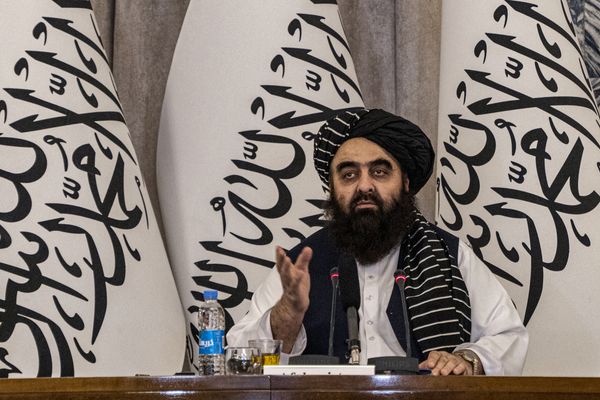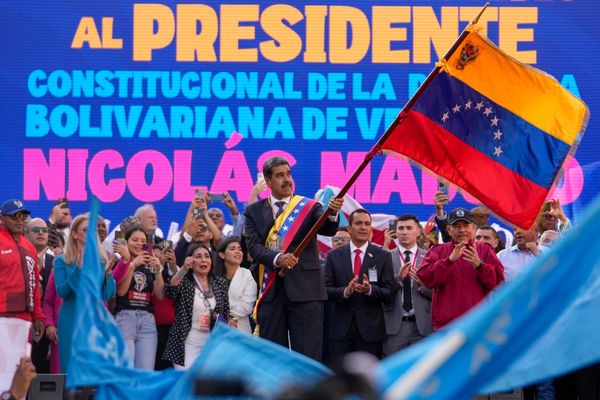
In 2018, then-U.S. President Donald Trump infamously tweeted that “trade wars are good, and easy to win.” They’re not, of course, as we’ve seen over the past four years. Yet contrary to decades of evidence that freer trade enhances U.S. economic prosperity and national security, protectionist fever is still infecting both parties—and possibly the Biden administration.
Trade protectionism in Congress isn’t new; trade issues are often parochial and industry-specific, which historically have resulted in congressional logrolling over tariff rates and unlikely bipartisan alliances against free trade policies. What is new, however, is executive branch hostility toward lowering international barriers to trade in the post-World War II era.
In a dramatic departure from free market conservative orthodoxy, Trump’s administration inflicted numerous trade wounds on Americans, including by raising tariffs on Chinese goods to an average of 19.3 percent, slapping so-called “national security” tariffs on steel and aluminum from virtually every U.S. trading partner, withdrawing the United States as a signatory to the Trans-Pacific Partnership (TPP), renegotiating the North American Free Trade Agreement (NAFTA) with provisions that restrict trade, hamstringing the primary enforcement body of the World Trade Organization (WTO), and enacting a host of other antitrade policies. The result? Increased costs for U.S. consumers, lost jobs, multibillion dollar “trade aid” bailouts, and measurable U.S. disengagement from the global economy.
It remains to be seen if U.S. President Joe Biden will stem the protectionist tides or try to ride them, but a key test is coming soon. Protectionist interests hostile to trade agreements strongly oppose a renewal of “fast-track” procedures for congressional approval of trade agreements, which are set to lapse on July 1.
Traditionally, Democratic presidential candidates have often campaigned on protectionism but have pivoted toward a more pragmatic international economic agenda once in office. For example, former U.S. President Bill Clinton ushered both NAFTA and U.S. membership in the WTO through Congress and former U.S. President Barack Obama secured approval of trade agreements with South Korea, Colombia, and Panama in addition to signing the TPP. Although the Biden presidency is still in its early days, the administration has kept Trump’s tariffs in place pending review—stating its trade policy will be worker first (a way of saying select industries should be shielded from competition)—and enacted some protectionist policies, such as tightening “Buy American” rules for federal procurement and re-imposing aluminum tariffs on the United Arab Emirates.
On the bright side, Biden has been clear he intends to repair relationships with U.S. allies that soured on the United States in part due to Trump’s trade provocations and nationalist rhetoric. But if the new president truly wants to reverse course on Trump’s disastrous trade policies, one meaningful action he should take is to request from Congress the renewal of a fast track. Beginning with the 1979 Tokyo Round of the General Agreement on Tariffs and Trade, fast-track legislative procedures—also called Trade Promotion Authority (TPA)—have successfully facilitated the negotiation and approval of 15 free trade agreements as well as the United States’ entry into the World Trade Organization in 1995. Only one U.S. trade agreement—the politically noncontroversial U.S.-Jordan Free Trade Agreement—has ever been approved by Congress without fast track, which means these legislative procedures are generally accepted domestically and internationally as a prerequisite for trade agreement approval.
Thus far, Biden and his trade representative, Katherine Tai, have been noncommittal on whether the Biden administration will seek renewal of TPA; however, U.S. Secretary of Agriculture Tom Vilsack recently expressed his support for such an effort. As Vilsack astutely observed, renewal of TPA will be critical if the United States hopes to successfully conclude open trade negotiations with the United Kingdom and Kenya or join the successor to the Trans-Pacific Partnership that Trump pulled out of: the Comprehensive and Progressive Agreement for Trans-Pacific Partnership (CPTPP).
The United States also has trade negotiations open with the European Union as well as negotiations at the WTO on fishery subsidies and digital trade. The Biden administration will need to decide quickly how it wants to move forward with these agreements, especially as the rest of the world continues to conclude trade deals excluding the United States at a breakneck pace. Lack of valid fast-track authorities will only impede Biden’s efforts to reengage U.S. allies and make it more difficult for the United States to secure trade agreements favorable to U.S. consumers, workers, and businesses. Over the long term, an inward-facing United States with a stalled international trade and investment agenda will weaken the its competitiveness and erode a potent tool of soft power—leaving Americans poorer and less secure.
TPA legislation, which has been renewed five times since 1974, grants Congress and the executive branch conditional constitutional authority to negotiate trade agreements—so long as the executive keeps Congress apprised of the negotiations, works to achieve certain negotiating objectives set by Congress, and adheres to various timeline and reporting requirements. In exchange, it guarantees the president a simple majority, filibuster-proof vote in both chambers of Congress, with no amendments permitted, within 90 legislative days.
The Obama administration was the last to renew TPA in 2015 when it requested fast track to pass the Trans-Pacific Partnership—a monumental agreement that would have applied liberalizing trade rules and tariff reductions to 40 percent of global GDP with the United States’ participation. Unfortunately, the TPP was never submitted to Congress, Trump withdrew the United States from the deal in early 2017, and it became the first trade agreement negotiated by the United States that Congress did not approve. The TPP was subsequently renamed the CPTPP and moved forward without the United States. Now, U.S. producers—manufacturers, farmers, and ranchers—face higher tariffs than their competitors in the Asia Pacific, a vital and growing region, while consumers pay more than they would otherwise for imports from CPTPP countries.
Critically, TPA helps to solve two persistent problems in U.S. trade policy. First, it temporarily resolves constitutional tension regarding who may negotiate and enter into an international trade agreement on behalf of the United States. Second, it provides assurances to U.S. negotiating partners that an agreement signed by the president will subsequently receive a timely, unamendable up-or-down vote in Congress.
The U.S. Constitution expressly vests Congress with the power to regulate commerce with foreign nations, resulting in a constitutional division of labor between the legislature’s trade responsibilities and the executive’s primacy in foreign relations and treaty negotiation. Prior to 1934, Congress closely guarded its trade responsibilities and set all trade policy directly, including legislation of individual tariff rates. This created ripe conditions for excessive logrolling as members of Congress haggled for months over tariff levels to protect favored constituent interests. This process culminated with the passage of the infamous Smoot-Hawley Tariff Act of 1930, which raised tariffs dramatically right as the United States was slipping into the Great Depression, triggered retaliation from trading partners, and helped stoke nationalist passions around the world.
The disaster of Smoot-Hawley effectively ended the era of direct congressional legislation of tariff rates. In 1934, then-U.S. President Franklin D. Roosevelt signed the Reciprocal Trade Agreements Act (RTAA), a pivotal bill in U.S. trade policy that was a precursor to modern-day TPA legislation and that then-Secretary of State Cordell Hull championed. For the first time, the RTAA delegated the president conditional authority to negotiate tariff-cutting agreements with foreign nations, including advance authority to proclaim tariff rate reductions, for a period of three years. By 1936, the tariff cuts implemented under RTAA agreements had lowered the United States’ average tariff on dutiable goods to pre-Smoot-Hawley levels. Successive renewals of the RTAA paved the way for the United States’ entry into the General Agreement on Tariffs and Trade (GATT), the precursor to the WTO.
Is Congress—and the Biden administration—willing to take the country back to the bad old days of Smoot-Hawley? Tai was the top trade lawyer for House Democrats and understands the historical importance of TPA and its role in facilitating congressional-executive cooperation on trade agreements. In years when the United States has not had TPA or similar legislation—such as the RTAA—in effect, the United States has been unable to approve new trade agreements successfully, and the negotiating power of the president has been diminished.
Tai also appreciates that TPA is a power-sharing agreement, not a wholesale delegation of Article I trade powers to the executive. When Congress passes a renewal of TPA, it decides the rules the executive can negotiate trade agreements under in exchange for procedural privilege. The current version of fast track—expiring in just a few months—contains negotiating objectives, consultation, notice, and reporting requirements in addition to disapproval mechanisms under which either chamber of Congress can “turn off” fast-track procedures if the executive branch has not upheld its end of the TPA bargain.
But if the Biden administration fails to correct the Trade Promotion Authority’s course, the United States may be left in the trading cold—just as the protectionist Trump administration may have well intended.







